Showing 131–140 of 142 results
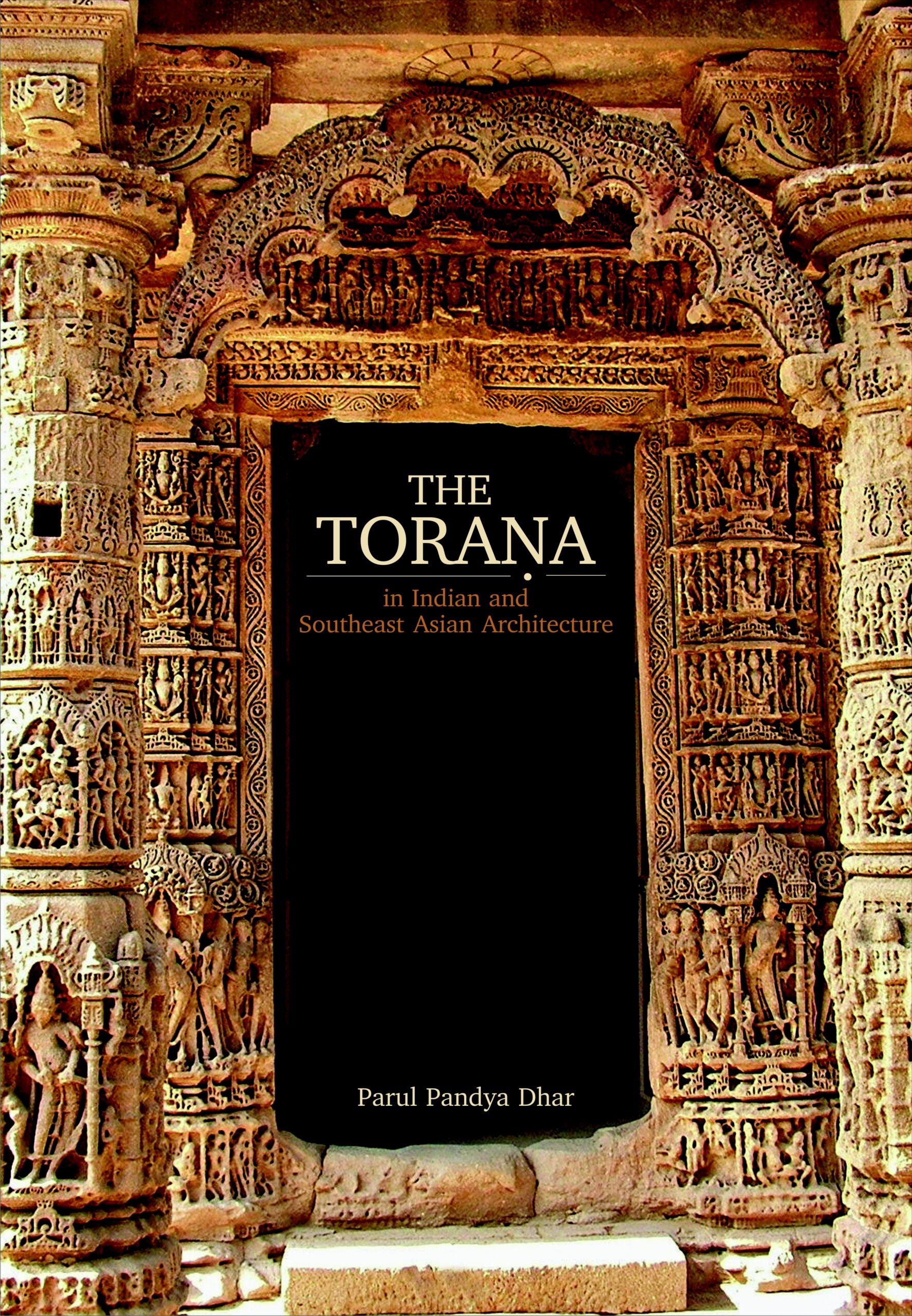
The book details the significance of the toranas arched portals or festoons in ancient and medieval architecture of South and South-east Asia, with special emphasis on Indian representation. The text is richly illustrated with photographs and line drawings from remote sites, museums and archival collections.
The present work discusses in depth the subject of toraªas (arched portals or festoons) in the ancient and medieval architecture of South- and South-east Asia, with special emphasis on Indian representations. Their antiquity and rationale; their continued presence in association with stupas, caves, temples, mosques, cities, forts, and palaces; their myriad forms and transformations; and their aesthetic and symbolic relationship to the structure in question are analyzed stage-by-stage in this book. The rich corpus of toraªas included here has been critically and comparatively analyzed in relation to traditional practice, as well as in the light of the medieval architectural treatises, historical records, and other literary sources. The approach is micro in the sense of being focused on a specific architectural element but macro in its regional and temporal span. In addition, the exposition reveals the grammar as well as the manifold visual formulations of the toraªa as representative of the basic principles of traditional Indian architectural ornament: integral to the structure, functionally apt, aesthetically significant, and visually evocative, with sound and sophisticated design principles. The text is richly illustrated, bringing together material scattered over several well-known as well as remote sites, museums, and archival collections. Whereas a major part of this book details the journey of the toraªa in ancient and medieval India, the section on early beginnings also includes references from Pakistan and Afghanistan, and the final chapter surveys, with a view to compare, parallel yet distinct expressions in Cambodia, Thailand, Champa, Indonesia, Myanmar, Nepal, and Sri Lanka.
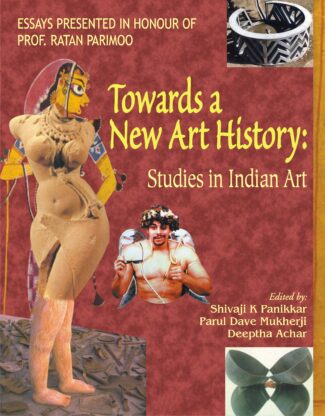
The essays here, challenging the boundaries and assumptions of mainstream art history, question many preconceived notions about meaning in representations artistic and art historical. Emphasizing on specific visual cultures within the dynamics of historical processes, they raise critical issues of art production, circulation and consumption and attempt to rescue traditional arts from a past that is hermetically sealed off from the present.
Mainstream art historical writing on Indian art has remained focused on identifying and defining stylistic schools, understanding evolutionary patterns and regional styles as well as understanding iconographic and narrative conventions and structures. The wide-ranging essays in this volume challenge the boundaries and assumptions of mainstream art history. Moving away from an art history structured by an art object-centered approach, this book gestures at a framework-oriented approach that calls attention to the political, social, economic structures that undergird art. It is an attempt to reformulate the discipline in a manner that can explain the field of the visual in a way that goes well beyond the explanatory capacity of conventional modes of studying Indian art. These essays question preconceived notions about meaning in representations artistic and art historical. They contest earlier claims about the objectivity of scholarship in general and history writing in particular as much as they critique the valorization of a purely individuated, subjective art criticism. In its attempt to historicize the practice of art, the book examines the economic, political and social implications of art that enable the re-situation of Art History among social science disciplines. The emphasis is on the study of specific visual cultures within the dynamics of historical processes. These essays raise critical issues of art production, circulation and consumption as well as production of meaning. Traditional arts have been studied from a critical perspective that extricates them from a past that is hermetically sealed off from the present. The opposition of High Art and non-art (read popular or mass visual culture) has been challenged. Breaking outside the ambit of high art, studies in the book extend from popular, mass-produced art to MTV imagery to digital art.
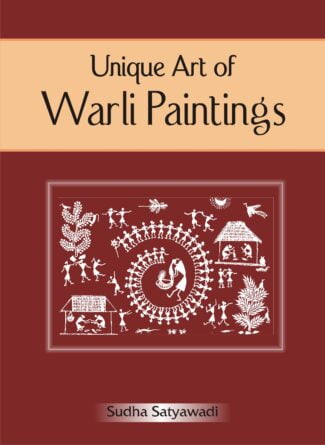
This book is a modest compilation of Warli art Þ of the Warli tribes of Maharashtra Þ that comes through an unbroken tradition of thousands of years. Warli art is simple yet rich. The paintings are expressive with profound truths which are brought forth in a most elementary format.
Warli painting has its own place in adivasi art of India. It takes its name from the Warli tribes of Maharashtra. It seems their roots are in the rock shelters of ancestors found in Bhimbhedka and Raisen in Madhya Pradesh.
Warli paintings are pointers they fulfil a purpose. Their presence in the hut is auspicious and is said to promote fertility, avert disease, propitiate the dead, etc. They show rituals at birth, marriage, a life full of dance and music, livelihood, connectivity with death and life after death. Artists express a kind of fulfilment they experience that is in harmony with nature and their gods and goddesses.
Warli art is simple yet rich. The material used for painting is simple, themes contained therein, philosophy of existence and even life beyond death, all are brought forth in a most elementary format. Many specimens of Warli art are contained in this book. The paintings are expressive with profound truths and project all that one needs to know how to live a happy life. Austere brown wall surface of huts displaying tribal designs with typical rock art motifs make Warli art different from other tribal paintings of India.
This book is a modest compilation of Warli art that comes through an unbroken tradition of thousands of years. But Warli art traditions are gradually vanishing. Money elsewhere is pulling artists away from their traditional occupation. Something has to be done by society to create conditions for them, to not get weaned away by lure of commercial avenues. This book is a small effort to save this art from falling off from the pathway of time continuum.

The three scholarly volumes contain an iconographic analysis and compilation of the over 760 images from the six chapels of the Pao-hsiang Lou in the Forbidden City, Beijing. There are details of each image like name in Sanskrit, Tibetan and Chinese; physical description; iconographical and stylistic features; and associated images.
The three volumes contain an iconographic analysis and compilation of the over 760 images from the six chapels of the Pao-hsiang Lou (Bao-xiang Lou) in the garden of the Tzu-ning Kung (Palace of Kindness and Tranquillity) in the Forbidden City, Beijing. The pavilion Pao-hsiang Lou, a two-storied simple structure with seven chapels on each floor, holds hundreds of Tibetan Buddhist images of remarkable quality. The volumes present the entire set of images, each reproduced and explained with great clarity. There are details of each image with regard to the physical description of the figure portrayed and its various iconographical and stylistic features and associated images. Each entry contains the name of the deity with the Sanskrit, Tibetan and Chinese transliterations of the name. The very interesting and useful introduction discusses deities of mandalas, placement of deities within a single chapel, images of the Pao-hsiang Lou pantheon compared to the Chu Fo Pu-sa Sheng Hsiang Tsan pantheon, variations in depiction of images with regard to their hair, crown and other parts and associated ornaments, and the asanas of the images. The scholarly volumes are a result of the painstaking research by the author by referring to noted experts on the subject. The volumes will interest all students and scholars of Buddhist art and iconography.
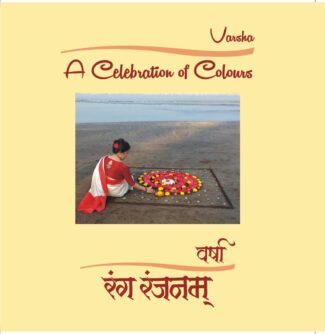
This volume, through colours, transcends many a cue of the aesthetic aspects of human life into a connoisseur’s mind. Whether on fabric or canvas, mud wall or floor, sculptures or pots, colours for us is a language, a raga and a tala.
Colours are not just for adornment, but a medium that reflects our state of mind, artistic acumen, culture, ethics, philosophy, social values, tradition and the sacredness of life. A non-verbal language, they conjure up our emotions, feelings and moo ds, and take a rasika far beyond the realms of words. In them we see the lush and luxuriant natural world around us, the world of birds and blossoms, earth and sky, gems and stones, creating in us a certain feeling and a gush of powerful ethos.
The artist in Varsha, through colours, transcends many a cue of the aesthetic aspects of human life into a connoisseurs mind. Whether on fabric or canvas, mud wall or floor, sculptures or pots, colours for us is a language, a raga and a tala. And Celebration of Colours is just that.
Involved with her family, Varsha loves art and craft, whether it is painting, embroidery, working with terracotta and ceramic, jewels and the creation of ornaments, crochet and knitting, stitching and designing clothes, or cooking. Absorbed in the world of colour, she likes to share her moment of beauty with everyone around her and spread joy everywhere.
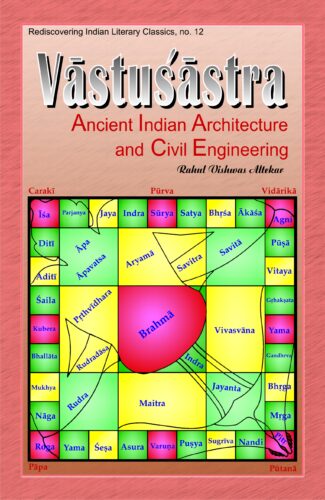
Examining vàstu÷àstra’s conceptual roots in øilpa÷àstra and its later evolution, the volume analyses technical aspects of vàstu÷àstra by concentrating on the essential elements (aïgas) of vàstu÷àstra which involve decision-making and actual construction methods, art of engineering and role and responsibilities of engineers, and aspects related to land materials and rituals associated with use of building after its construction
Though there has been considerable interest in vastushastra in recent times and the orientational aspects of vastushastra have been often discussed, little is known of the essential elements that constitute This small book, written in a simple and lucid style, contains teachings of great men, gleanings from the scriptures, and examples from the epics and Puranas, and suggests easy solutions to the various problems faced by man in the present-day world of violence, wars, killings and disasters, and how to have a holistic approach to life vastushastra and its scientific application in the present day. Based on extensive research, the work, vastushastra attempts to address this aspect. Examining comprehensively the subject of vastushastra: its conceptual roots in Shilpashastra and its later evolution as dealt with in the Vedas, the Epic literature, Arthashastra, literature on ayurveda and Kamasutra literature, the volume analyses technical aspects of vastushastra by concentrating on the essential elements [angas] of vastushastra which involve decision-making and actual construction methods, art of engineering and role and responsibilities of engineers, and aspects related to land materials and rituals associated with use of building after its construction. It discusses the eco-friendly life style of the ancient Indians based on vastushastra principles. Giving minute attention to details, it focuses on the application of vastushastra in the present-day society — how the vastushastra principles can be scientifically applied and the potential of application of vastushastra keeping in view modern trends in architectural science and civil engineering.
The book will be useful for students and scholars of architecture and engineering and those interested in vastushastra.

The book gives account of the Vaishnavite temples of Kanci, providing numerous pictures with the structural, architectural and sculptural aspects of the temples. It also throws light on the historical, religious, social and cultural values of the temples.
Kancipuram was the important capital of north Tamil Nadu for a long period — from the first-second century ce to the end of the seventeenth century. It was a beautiful city laid out in the form of a lotus, according to the poem Perumbanarrupadai. It was admired by the world as a place famous for its festivals and noted for its temples. Through the ages, it has been the abode of many religious leaders who devoted their lives to the religious uplift of the people.
This well-illustrated work presents a history of the Vaishnavite temples of Kanci, focusing on the history of the ancient temples from the Sangam Age onwards, the many legends, myths and other accounts that refer to it, and its location and building. It provides a detailed account of some major temples of the city supported by numerous pictures of the temples that cover various aspects of each — the entrance and other parts of each temple structure, its architecture, and its artistic engravings particularly its sculptural beauty. It delves into the Vaishnava tradition for concepts and ideas underlying the construction of the sanctum and the sub-shrines, and portrayal of divine forms on the walls, pillars and other parts of the temple. There is a detailed study of the sculptures in the main walls of the temples and the main deities in the shrines. It also examines the many inscriptions found in the temples to offer insights into the historical, religious, social and cultural value of the temples.
The volume is bound to interest a host of readers, particularly scholars and students of Indology involved in the study of the cultural traditions of south India and its religious art and architecture.
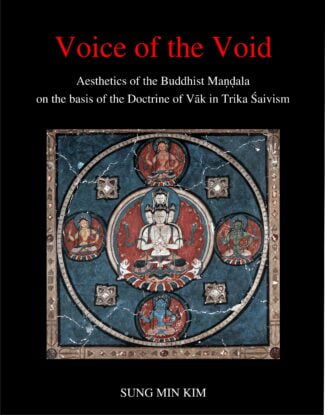
This volume examines how the perceptible form of Buddhist mandalas represents shunya (void), with special reference to the mandalas of Tabo and Alchi. On the basis of the concept of vak (subtle sound) in Trika Shaivism of Kashmir, it investigates where their aesthetic power derives from.
The research undertaken here about Buddhist mandalas is basically designed under the philosophical question how the visible dimensions of forms are related to their invisible contents. The textual sources in reference to Buddhist mandalas teach that the essence of mandalas is shunya (void) and their forms are the reflective images (pratibimba) of shunya. This volume investigates how the colourful form of Buddhist mandalas represents the prime concept of shunya, and what makes these mandalas visually powerful, leaving the impression of ßspiritual enhancementû in the heart of people who do not even know about the Buddhist doctrines.
The mandalas permanently represented in the monastic complexes of Tabo and Alchi in the Western Himalayas have been focused in order to examine a prominent role of visual dimensions of mandalas. In order to comprehend mandalas in the context of Buddhist philosophy, the texts of the Yoga-Tantra class have been looked up. Especially, the references to the tantric visualization-practice throw light on the internal experiences with mandalas.
Considering the fact that the Buddhist mandalas have been developed as a method of Mantrayana, being always combined with mantras and mudras, this volume presents the concept of vak (word, subtle sound, voice) as a key to explain how the ultimate state of shunya and perceptible forms of mandalas are related to each other. The doctrine of vak developed in the tradition of Trika Shaivism in Kashmir provides us with a systematic way to explain the non-dualism between all phenomenal objects and the Supreme Divine. The doctrine of four levels of vak is examined in the book for the purpose of interpreting the aesthetic phenomena and structuring the different levels of meanings of mandalas from the aesthetic perspective. On the basis of the vak theory, the external forms of mandalas have been explored and their visual principles have been technically analysed, in attempt to answer the question: how do the colourful forms of Buddhist mandalas resemble the formless shunya?
Lord Buddha, in his profound wisdom, said that for extinction of human suffering, complete annihilation of desire is the only way. This is the sacred truth of suffering.
Acarya Carvaka, equally profound in his thinking, said that life is a continuous celebration of desire. Kama (desire) and artha (wealth) are the only true goals of life. Beg, steal or borrow, but live life like a king. Enjoy life full as long as one is alive.
Who is correct? Lord Buddha or Acarya Carvaka? What is desire really meant to Indian society, religion and culture through ages?
The book tries to address these and similar questions objectively and diligently.

The book, highlights the essential import of the innocuous-looking, yet enigmatic, diagrams called Yantras surfacing from the occult practices of the tantrics. It examines a range of tantric yantras, with their varieties, applications, modes of construction and above all their iconographic features.
Hinduism is known for the bewildering profusion of its deities, who are represented not only in two or three dimensional anthropomorphic images, but also in abstract configurations, known as yantras. In yantras is, thus, seen almost a parallel with the surfeit of deities in Hindu tradition. Literally meaning an instrument, apparatus or a talisman, yantra is a kind of mystical diagram used, in tantra, for both meditation and invoking a divinity, and is believed to possess/arouse occult powers. Drawn only by the adept: the ones schooled in this arcane, highly intricate process, and energized by siddh mantras, these seemingly innocuous geometrical figures are employed for any number of reasons or desires: whether to attain wealth, ward off disease, beget a son, vanquish enemies, or even to cause somebodys death. This book, the latest from Professor Bunce, highlights the essential import of these innocuous-looking, yet enigmatic, diagrams surfacing from the occult Practices of the tantrics. The author, an internationally known scholar of Oriental Art, examines a range of tantric yantras, with their varieties, applications, modes of construction and, above all, their iconographic features. Also inter- woven in his text are lucid descriptions of all else associated with a yantra, notably, its deity, its specific purpose, its predominant and secondary numbers and its mantra. Carrying beautiful visual representations of over a hundred yantras, Professor Bunces study holds out enduring appeal to the readers concerned not only with the iconography of tantric yantras, but their mystifying under-pinnings as well.
| There are no products |